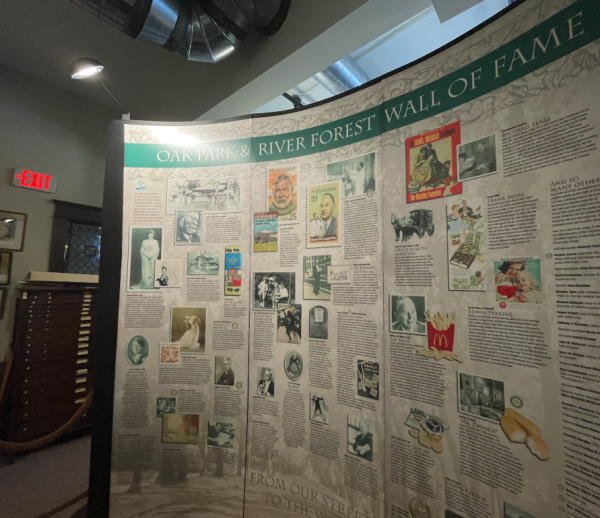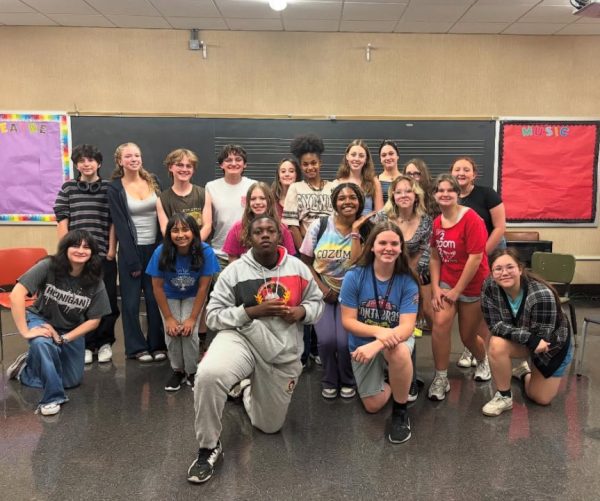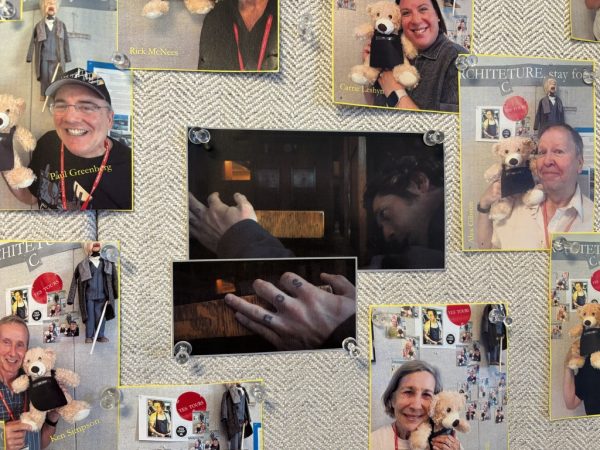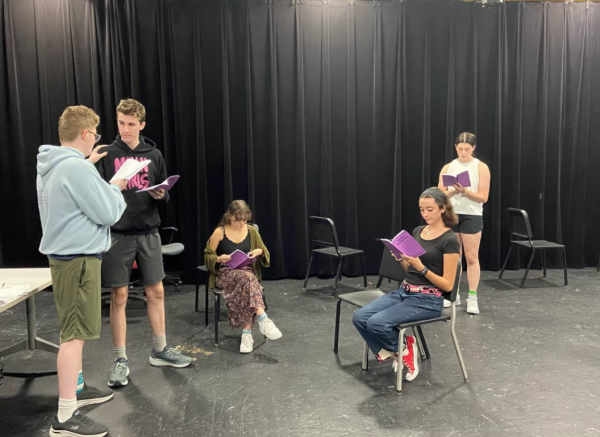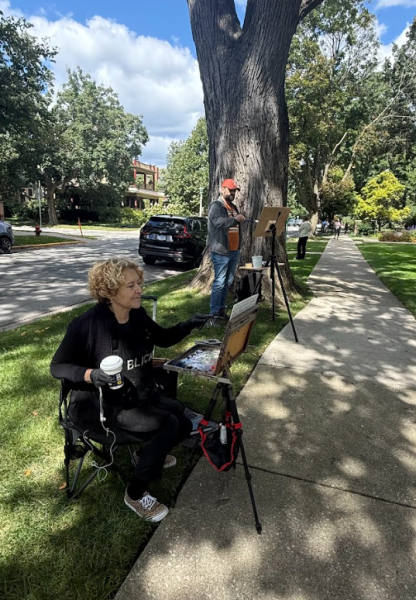OPRF dancers shine in fall Orchesis show
When OPRF senior Georgia Smith joined Orchesis, OPRF’s contemporary dance group, she was surprised to hear she was not only allowed to talk backstage but encouraged to cheer on her fellow dancers between pieces.
When sophomore Sonja de Jong, a current member, first saw an Orchesis show a few years ago, she was confused by the cheering coming from backstage before each piece. “I was like, what are they doing?”
Betina Dunson-Johnson, director of Orchesis, said the tradition of cheering dancers on has been around since before she came to OPRF. “I was in the audience and I was like, ‘Who is that screaming, and why are they yelling?’ At first I was startled by it, but over time I’ve grown to really love it,” said Dunson-Johnson.
Typically during contemporary dance performances, “everyone is silent. But (through the cheering) they get to really support each other in this really loving, thoughtful, kind way,” said Dunson-Johnson. “In this moment, you feel that support, you know that they have your back and they are here to cheer you on.”
The fall Orchesis show, performed on Oct. 22, 23, and 24, was a mix of group numbers, solos, and duets, all performed and choreographed by OPRF students. The majority of the pieces were contemporary dance, but there were also tap and hip hop pieces.
It is hard to define contemporary dance, Dunson-Johnson says. “You will hear different things from different people. Contemporary dance encompasses many forms of dance, specifically classical ballet, modern, and jazz…Oftentimes you will see West African dance infused in it, too.”
The show provided an opportunity for students in company dance to perform solos. Company dance is a physical education class offered at OPRF aimed at students who are serious about studying dance in college or pursuing it professionally. The class covers “dance composition, dance history, dance critique, and other artistry-building components,” said Dunson-Johnson.
At the most recent Orchesis show, each solo addressed a different social issue, using recorded audio, music, lighting, and, of course, dance. Topics included body image, violence against women, being non-binary, and what it feels like to have a panic attack.
Senior Leah Gerut, a company dance student, said her solo was about the quarantine. “I tried to (take) how I was feeling during quarantine and put that emotion into the dance that I was doing. I did a lot of heavy movements and repetitive movements because that’s what quarantine felt like for me.”
Gerut said that, when dancers are not changing costumes, they typically watch the performance from backstage. “Being backstage in the wings for any show is a really unique experience because no one else gets to see the show from that angle,” she said. “The lights look really cool from backstage. The hip hop dance had groovy music, lighting, and costumes. I liked that I got to see the dance up close.”
Stage manager Jay Williams, who saw the show five times during rehearsal and performance, said the hip hop duet, performed by senior Maya Klippel and junior Louise Anzaldi, was their favorite piece. “They had ’90s clothes on, very baggy pants and sweaters and hoodies,” said Williams. “They were doing this, not really pop and lock (a hip hop dance move), but that sort of style where it’s very flowy and it moves to the other person easily. And they looked like they had fun throughout all of it. It was a really fun number. A lot of the time (the crew was) vibing in the booth and dancing.”
One especially striking element of the performance was the lighting. “The lighting for Orchesis shows is always fantastic…They had lighting that correlated with the sound,” which added to the power of the performance, said de Jong.
The role of crew is different for each type of show, said Williams, “but for Orchesis specifically, if there’s any emotional story to whatever piece the dancers are doing, we provide an atmosphere to convey that message a lot more.”
Watching the finished project of an Orchesis show is “wonderful,” said Dunson-Johnson. “I am often overwhelmed with tears because the amount of work that goes into it is great, it’s huge. To see it come and be fully realized is amazing.”
Smith didn’t know much about Orchesis when she auditioned as a freshman, other than the fact that people told her “it’s like drill team for losers.” She felt out of place among some of the other dancers, as many of them dance with other companies and she doesn’t. After crying at her audition, she worried she only made the team because they pitied her. Dunson-Johnson and older members in the company, especially two seniors named Ev and Sarah, made sure Smith felt she belonged.
Dunson-Johnson, known as “Ms. DJ” or just “DJ” by many students, told Smith “you’re here because you’re good at dance, not because of some pity thing. This is what you’re good at…This is where you belong,” said Smith.
Now that Smith is a senior, she says “I want to be like Ev and Sarah, who I looked up to so much. (I’m) trying to build that community, trying to be supportive of everyone around me, trying to be as kind as I can.” Smith also said she is trying to keep the many Orchesis traditions (including an annual trip to a pumpkin patch and special cheers and games) alive.
Dunson-Johnson puts her trust in the students, said Smith. “She wants to help the choreographers bring their vision to life. She wants to have everyone be happy and she knows we are all creative, and she wants to help us express that creativity.”
Orchesis starts its second season early March and will present its spring show late April or early May.

